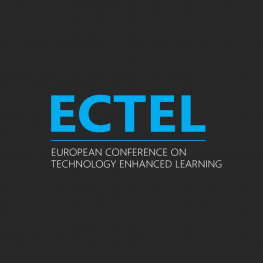Speakers
Steven James Moore
Carnegie Mellon University, USAElad Yacobson
Weizmann Institute of Science, IsraelTobias Ley
Danube University Krems, Austria and Tallinn University, EstoniaStart
08/09/2023 - 11:00
End
08/09/2023 - 12:30
Address
Room 40.1.8 View mapSession 10: Learning Design
Chair:  Kairit Tammets
Kairit Tammets
Evaluation of a hybrid AI-human recommender for CS1 instructors in a real educational scenario
Filipe Dwan Pereira, Elaine H. T. Oliveira, Luiz Rodrigues, Luciano Cabral, David Fernandes, Leandro Carvalho, Dragan Gasevic, Alexandra Cristea, Diego Dermeval and Rafael Ferreira Mello
Abstract: Automatic code graders, also called Programming Online Judges (OJ), can support students and instructors in introduction to programming courses (CS1). Using OJs in CS1, instructors select problems to compose assignment lists, whereas students submit their code solutions and receive instantaneous feedback. Whilst this process reduces the instructors’ workload in evaluating students’ code, selecting problems to compose assignments is arduous. Recently, recommender systems have been proposed by the literature to support OJ users. Nonetheless, there is a lack of recommenders fitted for CS1 courses and the ones found in the literature have not been assessed by the target users in a real educational scenario. It is worth noting that hybrid human/AI systems are claimed to potentially surpass isolated human or AI. In this study, we adapted and evaluated a state-of-the-art hybrid human/AI recommender to support CS1 instructors in selecting problems to compose variations of CS1 assignments. We compared data-driven measures (e.g., time students take to solve problems, number of logical lines of code, and hit rate) extracted from student logs whilst solving programming problems from assignments created by instructors versus when solving assignments in collaboration with an adaptation of cutting-edge hybrid/AI method. As a result, employing a data analysis comparing experimental and control conditions using multi-level regressions, we observed that the recommender provided problems compatible with human-selected in all data-driven measures tested.
📄 Read More: https://link.springer.com/chapter/10.1007/978-3-031-42682-7_21
How Do Teachers Search for Learning Resources? a Mixed Method Field Study
Elad Yacobson and Giora Alexandron
Abstract: Teachers using Open Educational Resource (OER) repositories face the challenge of searching & selecting learning resources (LRs) that match their pedagogical goals and teaching preferences. However, teachers are often overwhelmed by the multitude of LRs in such repositories. One way of aiding teachers is providing them with search mechanisms that rely on semantic information describing different properties of the materials, and peer-generated reviews and feedback (`social recommendations’). Previous studies of teachers’ search & select strategies in such systems were usually conducted in controlled settings, limiting their generalization to real-life contexts. The literature also lacks systematic evaluations of the usefulness of semantic information and social recommendations to teachers’ search procedures. To address these gaps, we conducted a study with physics teachers who use a nation-wide blended-learning environment containing an OER repository and social network features. We applied a mixed-method approach, first interviewing teachers and observing them performing authentic search tasks, and then triangulating these findings with data mining analysis of log files containing data about teacher interaction with the learning environment. Our findings demonstrate the value that teachers ascribe to social-based information, especially from peers who are perceived as credible or like-minded, when searching & selecting LRs. We discuss possible implications for stake-holders and designers of OER repositories for blended instruction in K-12 environments.
📄 Read More: https://link.springer.com/chapter/10.1007/978-3-031-42682-7_33>
A Learning Design to support transfer of training in Continuing Education
Jaanika Hirv-Biene, Gerti Pishtari, Marlene Wagner, Milena Sarmiento and Tobias Ley
Abstract: Transfer of Training refers to the application of what has been learned in formal educational settings to the workplace. While technologies for work-place learning have gained ground in recent years, there is less of a focus on learning designs that bridge formal and workplace learning contexts and effectively support transfer. We present a design-based research intervention in which we developed a learning design guiding learners through several stag-es of planning, transfer and reflection. We demonstrate implementation of the learning design with a cohort of students in two continuing education courses and an evaluation with the teaching staff. Data collected during implementation suggests that students had strong transfer intentions and were successful in attempting transfer, but that reflection needs stronger scaffolding and social support. We propose adaptations to the learning design including conversational guidance and automated analysis of free texts collected from students in the transfer process.
📄 Read More: https://link.springer.com/chapter/10.1007/978-3-031-42682-7_7



